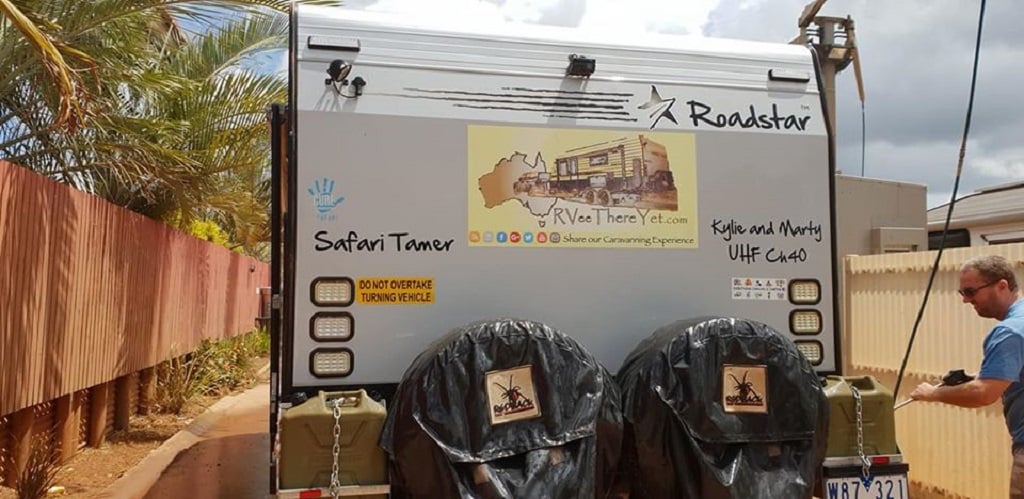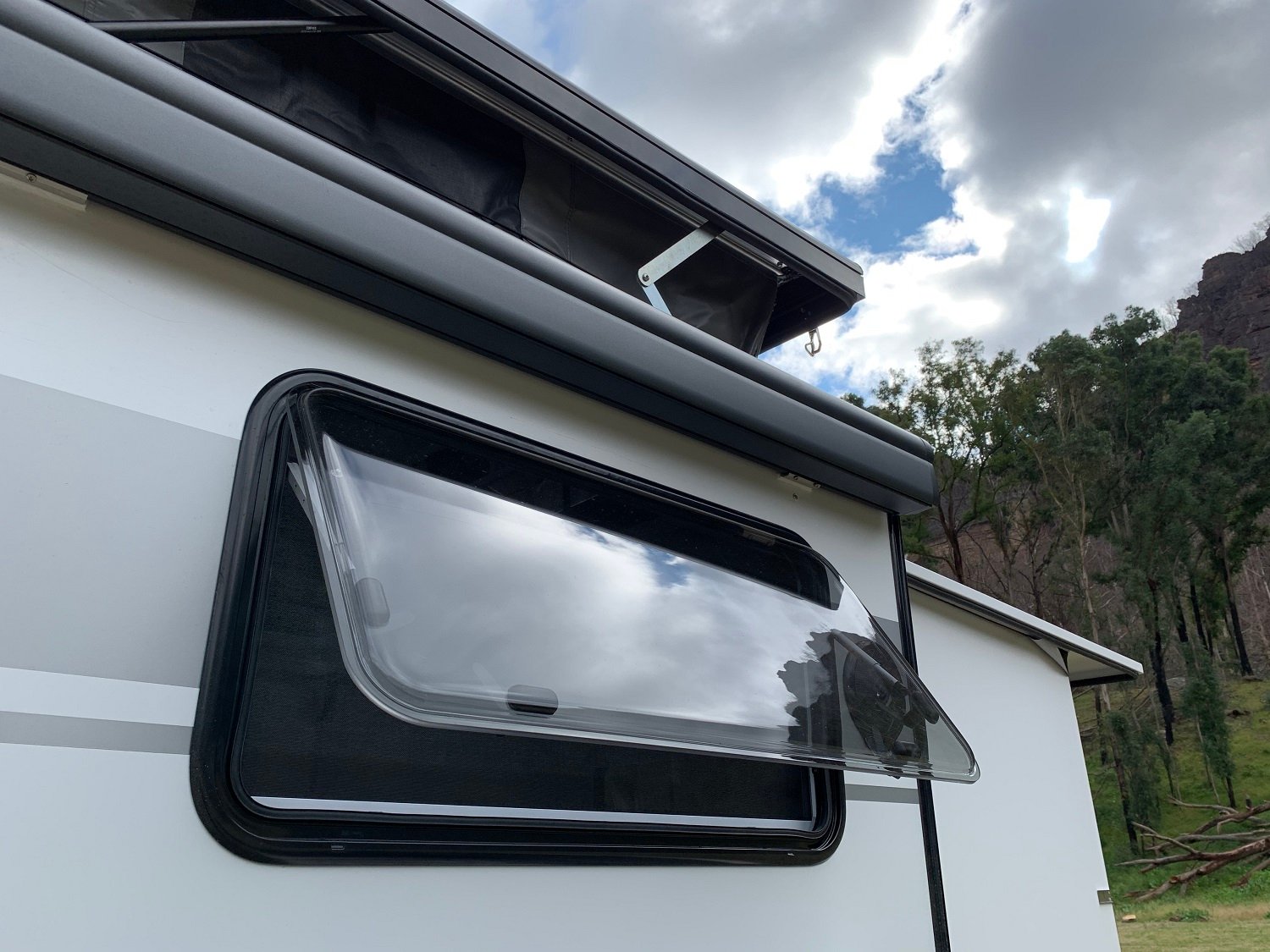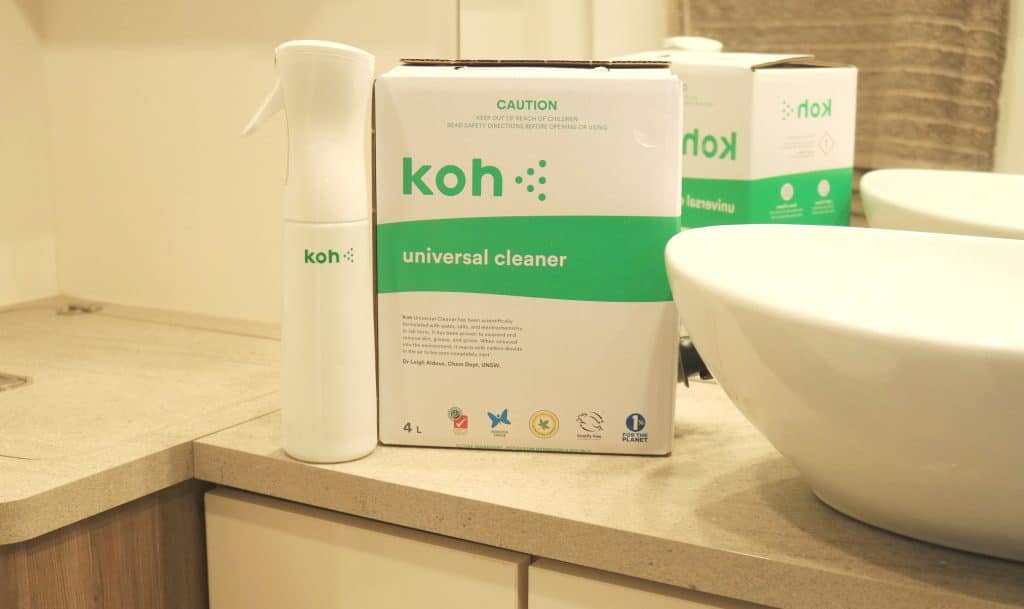Cleaning your caravan – 10 proven tips for doing it right


It’s a routinely mundane task to clean your caravan. However, it not only means the obvious – it’s a nice place to be when clean – but cleaning also gives you a great chance to find things in need of repair! So add it to the maintenance schedule with these top 10 tips for cleaning your caravan.

While the portable pressure washer has revolutionised the home care industry, using a high-pressure cleaner on a caravan is asking for trouble. Unless you’re very careful with where the spray is focused, you run a risk of dislodging seals and forcing water into places it shouldn’t be. An older van with loose paint may look decidedly second-hand if you’re not careful, too.
It’s not unknown for a high-pressure wash to remove a van’s decals. If you can turn down the water pressure for the upper portions of the caravan, then you should be okay. However, cleaning with a garden hose and a bucket/sponge will be a safer if more time-consuming, bet. Washing by hand will allow you to look closely at your van’s true condition. An off-road van might need a pressure washer to do underneath but, again, watch where the blast is going.
Even if it’s only a step up from washing-up liquid, try to use the same detergents that you spent ages selecting for your tow vehicle. Car washes will clean your caravan’s bodywork with the same properties and will be safe for trims, seals, rubber and painted panels.
Be mindful of where you wash your van too, and not to let detergent-rich water or wholesale chemical filth (degreaser, etc.) run into drains it shouldn’t. Wash on the lawn or a dedicated commercial van wash station – being mindful of the pressure tips above.
Unless you’re an NBA league star, it’s unlikely you can reach the roof of your caravan to clean it. You will need a step or stepladder. Slinging soapy water around and ladder treads don’t mix, so be careful and wear sensible footwear. Car-care shops sell a million types of attachments, so finding a long-handled brush or similar won’t be a problem.
Again, accessing the roof (even via a hatch if you’ve something stable to stand on) will help you clean and inspect those hatches, your aircon and solar panels, and check the condition of any sealants. Which, if breaking up, won’t benefit from a high-pressure blast either (unless you’re planning on a renovation).
Makes sense! You don’t want to wash things twice, so start at the top of your caravan and work your way down with the cleaning. Soapy water running off the top will help loosen dirt and grime, meaning it’s less stubborn when you reach the lower sections. However, as with cars, you may want to do the wheels first, and with different water than that for the body, because there’s much more contaminant from grit, oil or grease and brake dust in some cases.
If there’s one thing I picked up from flat-sharing from someone who worked in hospitality (no, that cleared up with the cream), it’s that you don’t need to spend anything on glass cleaner. Simply use damp newspaper (I collect the free local papers for this reason) on windows and mirrors to effortlessly clean them. It even works on cloudy shower screens.
If you’ve bush-pinstriped the outside of your acrylic windows, then a specialist compound like Vuplex is recommended. But for cleaning anything glass in your caravan, damp newspaper is da bomb (apparently that’s good).

Whereas most of your caravan or camper-trailer will be built of tough, life-in-the-outdoors kinda materials, if you’ve got a pop-top or expanda-type tent sections, then take care when cleaning the canvas. The same applies to your awning. Don’t use harsh chemicals or abrasives, simply soap or water or a dedicated cleaner recommended for the job will do.
Using a strong compound regularly may clean the canvas but you don’t know what it’s doing over time, or if it builds up in the stitching causing potential weakness or leaks. Plus, if you must go the chemical route, always check colour-fastness too. Thoroughly dry any material sections before you pack up to avoid mould. And a top tip for mould: white or cleaning vinegar kills mould spores; cheap mould killer often just bleaches it. Brown vinegar is for chips.
As with the material sections, use a chamois or a microfibre cloth to dry off your caravan or camper once you’re done cleaning it. Not only will this mean your paintwork (if not brilliant white) will be streak-free, but your eyes will give the RV another once over, looking for issues that may become visible at closer quarters. Leave all your hatches and toolboxes open to air out and dry thoroughly before you seal everything back up.

Just like at home, inside the caravan is where you get up close and personal with stuff, so you’ll need to clean that too. Of course, you carry a dustpan and brush, but another option for bigger jobs is a cordless vacuum. Makita does an awesome battery-powered stick vacuum. The long handle makes it easy to access those hard to reach places and when it comes to storage, it comes apart and can be kept in its box. Plus, if you have other Makita products, the battery is interchangeable.
Once the dust has been removed, you can use an all-purpose surface cleaner in your caravan. Our favourites are Diggers Lavender-scented all-purpose surface cleaner and Koh’s Eco-certified Universal Cleaner. A little goes a long way so they are both great value for money.
When it comes to the kitchen, store your staples in a good set of canisters with clip-on lids. Baskets are also a great option. This tip extends to the rest of your caravan. Where you can, maximise space by keeping everything organised, ensuring any day-to-day items are in easy reach.
Whether you polish your caravan or camper is a matter for you, but there are options to protect the outside from the ravages of our climate after you clean it. You can cover it when not in use, or you can look at exterior paint treatments, a vinyl protector that you can wipe on. Lanolin spray works well in many applications, but make sure whatever you use leaves no residue.
If you’re buying new, be wary of hugely expensive interior and exterior paint/fabric/rustproofing deals. It’s not that they don’t work necessarily; it’s usually the cost at that point in the sale process. You may get a better deal to approach a company directly, but many treatments can be DIY.
It’s an old saying but it can be applied here. Essentially, if you keep your caravan or camper (and tow vehicle) in tip-top condition then it’s going to last longer, look better and should raise more re-sale value when you come to sell it.
Nothing says ‘neglect’ like peeling paint, faded vinyl and knackered trims, so it’s in your interest to keep on top of things. On occasion it’s great to have a worn-in, dirty-looking RV that screams “I’ve been somewhere” but not when you’ve advertised it as: one careful owner, only used on long weekends.
Written by Tim Scott and Glenys Gelzinis
